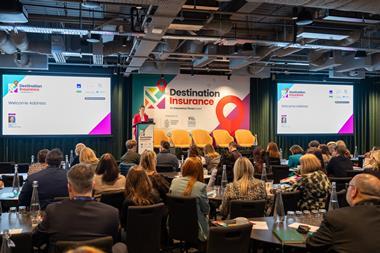Customer trends change with every passing decade. Fifty years ago, few people would have predicted the advances in technology that would make mobile phones freely available. Even less likely would have been the prediction that, within 15 years of the first mobile phone being produced, 60% of the population would own one. Less likely still, that they could be used to access the internet (which actually didn't exist at that time) or to carry out business transactions quickly and easily.
In this day and age of information and technology advances, how far into the future can we predict? And what intelligence and information can assist in predicting the future?
History shows that, in every marketplace, there are winners and losers. It would seem reasonable to suggest that the winners are those who are better at predicting the future and gaining the competitive advantage – or maybe they're just lucky. But whether it's luck or good judgment, predicting the future can change the dynamics of the whole business within years, if not months.
Take the banking marketplace, for example. In most people's memory, banking was carried out through personal representation at a high street bank. You carried out your transactions in person, you knew your bank manager and he knew you. This was the norm just 25 years ago .
So, how has the marketplace changed in 20 years? You can still bank in person, but the number of branches has reduced extensively. Now you are more likely to bank by telephone, mobile phone or the internet and you can access your account from almost any country in the world. First Direct, Egg, Cahoot or IF did not exist 20 years ago, but today they form a very real part of banking life.
Predicting these changes and “future watching” has been the strategy adopted by most new entrants and existing companies looking to make headway in a competitive marketplace. We've seen it in the insurance industry – the launch of Direct Line revolutionised the way customers interacted with their insurers – and now, with the acceptance of the internet, even more changes are taking place.
But while technological developments have been rapid, customers are different and where some adapt to change, others won't. Part of future watching is knowing the balance between the two.
We can probably all picture someone we know with the “I've done it like this for years, so why change now?” attitude. But, equally, I'm sure we can all picture someone who is always first to embrace the latest technology or product.
Both types of customer are valuable, but it is these differences that make future watching all the more difficult.
I would suggest that possibly the greatest skill in future watching is the ability to open up to all possibilities. For instance, what proportion of insurance premiums pass through the following channels now?
And, perhaps more importantly, in the next two, five, ten or even 20 years, what proportion of business will pass through each of these channels ?
What new channels will there be that do not exist today? For both major insurers and most independents, the main challenge will be to decide which of the channels will drive the greatest business opportunities, although for independents, realistically, it may be more about which channels can be used effectively within limited marketing and advertising spend.
The following list of dynamics is by no means exhaustive and the extent to which each will have an effect varies. However, they could all play an important part in changing the insurance marketplace in the future:
The more information that can be gathered on the current status of all of these factors and the changes that are likely to happen in the next few years should provide the information on which better judgments can be made.
So, where do you see the changes in the next five years and, more importantly, are you ready for them?
Hosted by comedian and actor Tom Allen, 34 Gold, 23 Silver and 22 Bronze awards were handed out across an amazing 34 categories recognising brilliance and innovation right across the breadth of UK general insurance.












































